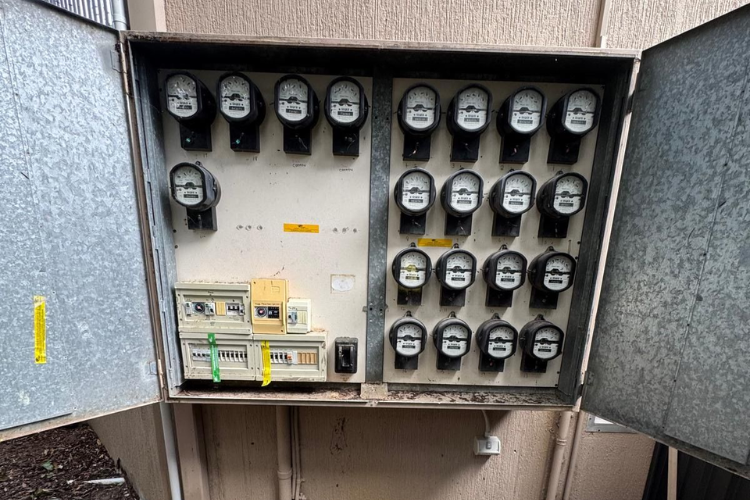Insights & Expertise
From the Field

Why Old Switchboards Are a Problem
Switchboards installed decades ago were never designed to handle the demands of today’s electrical loads. Air-conditioning units, EV chargers, pool pumps, multiple fridges, and home offices all pull far more power than a 1970s or 80s board was built to distribute.
The dangers of leaving an old board in service include:
- Overheating and fire – Loose connections, old fuses, and undersized wiring can overheat under modern demand.
- No safety switches – Without RCDs, there is nothing to instantly shut off power in the event of an electric shock or earth fault.
- Overloaded circuits – Adding new appliances or equipment to old circuits can trip, melt, or fail in dangerous ways.
- Insurance risks – Many insurers expect boards to be compliant with current safety standards. Claims can be challenged or denied if outdated equipment is a factor.
The Real Costs of Waiting
It’s easy to put off an upgrade because “the lights are still on.” But the hidden costs quickly outweigh the savings:
- Emergency repairs are expensive – A single late-night callout for a failed main switch or burnt cable can exceed the cost of a planned upgrade.
- Downtime hurts businesses – For commercial premises, a failed board means lost production, closed doors, and frustrated clients.
- Property sales and tenancies trigger obligations – In Queensland, buyers and landlords are legally required to install safety switches within 90 days if they’re missing. An old board will force the issue.
- Retrofitting under pressure costs more – When upgrades are forced by breakdown or legal trigger, there’s no time to plan or stage the investment.
The Safer, Smarter Approach
Proactive switchboard upgrades don’t just eliminate risk — they deliver peace of mind and long-term savings. Modern switchboards are designed with:
- RCDs (safety switches) on all circuits, protecting people from electric shock.
- Circuit breakers that trip cleanly instead of melting old fuses.
- Capacity for future expansion, so adding solar, batteries, or EV chargers is straightforward.
- Compliance with AS/NZS 3000 and AS/NZS 61439, giving assurance that your board is built to modern safety standards.
By upgrading before failure or forced compliance, you stay in control of timing, budget, and outcome.
The Bottom Line
Old switchboards may look like they’re working, but they carry hidden dangers that only become obvious when something goes wrong. The longer you wait, the more likely those dangers will translate into real costs — from emergency callouts and property damage to compliance fines and insurance issues.
A planned upgrade, on the other hand, is an investment in safety, reliability, and peace of mind. Whether you’re a homeowner, landlord, or business owner, the most cost-effective time to upgrade your switchboard is before it fails.
.svg)